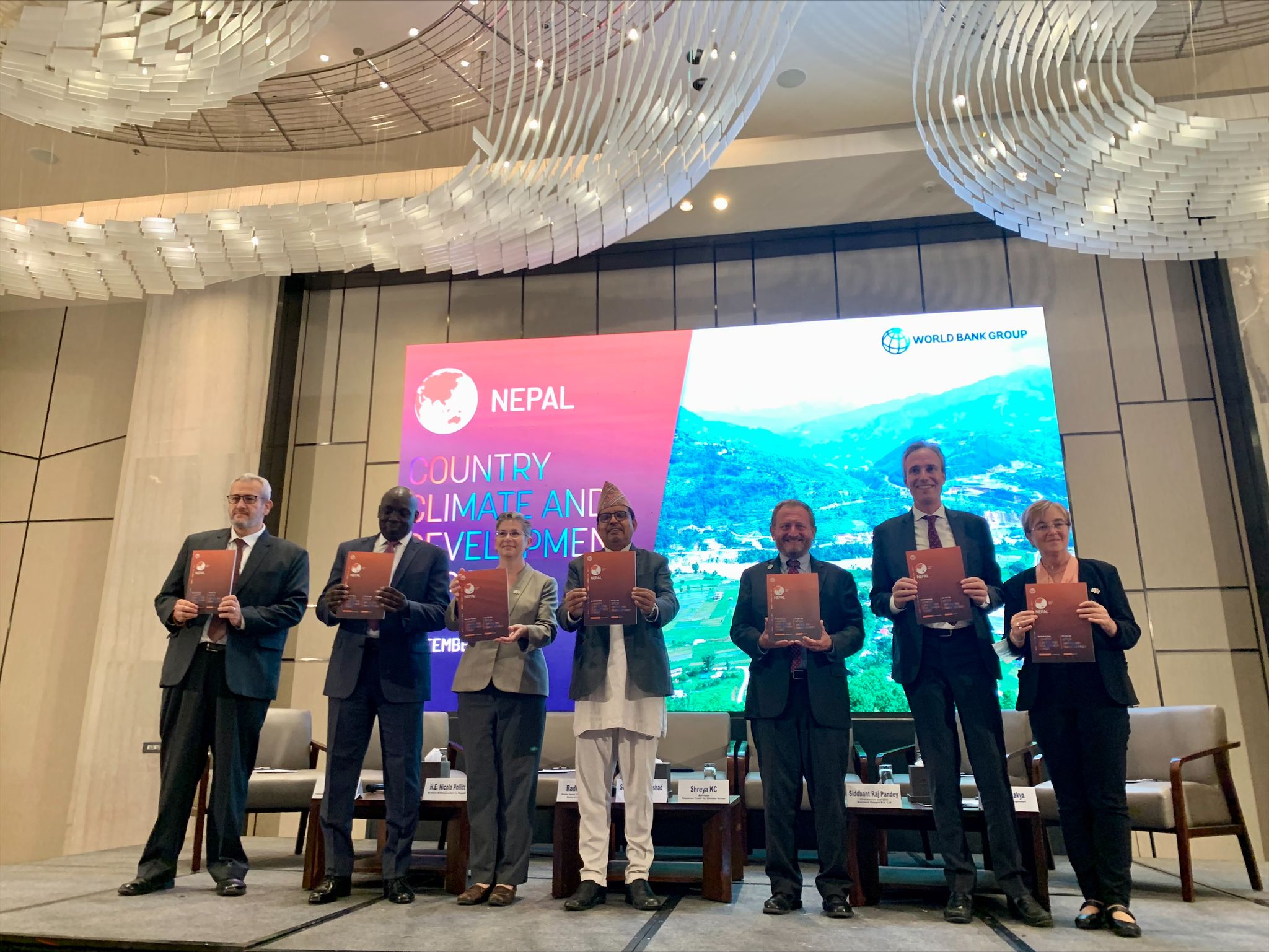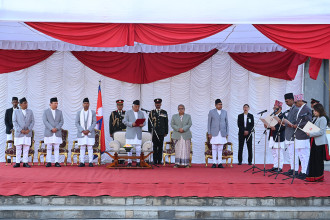
KATHMANDU: The World Bank Group’s Country Climate and Development Report for Nepal underscores the urgency of building resilience to climate change and recommends policies and investments for integrated climate and development solutions for green, resilient, and inclusive development.
Nepal’s supply chains, farmers, and urban dwellers are already facing devastating climate impacts such as landslides, droughts, and flooding. Without concerted steps to shore up resilience, future climate hazards will threaten the country’s long-term development. Climate variability is already a major driver of food insecurity and poverty in Nepal, with increased flooding and heat stress seen in the southern regions, while the north experiences increased landslides, water stress, and glacial lake overflow. The report states that Nepal’s GDP could be at least 7% smaller by 2050 due to unchecked climate impacts.
As Nepal’s economy grows, it also needs to address its greenhouse gas and air pollution emissions. While the country is a negligible contributor to climate change – producing 0.1% of total global greenhouse gas emissions – the country’s emission rate is growing rapidly. Nepal also has one of the highest levels of air pollution in the world, with emissions from transport, biomass burning, and industrial activities significantly impacting health and productivity.
“With increased evidence of more severe climate change impacts, Nepal stands at a critical juncture to embark on a path for recovery and growth that is more sustainable, more inclusive, and more resilient to future shocks,” said World Bank Vice President for South Asia Martin Raiser. “The good news is that the country’s notable successes in community forestry and hydropower investments are a strong foundation for future climate-smart growth.”
Nepal has pledged to achieve net zero emissions by 2045 and to significantly scale up hydropower investment in the coming decade. In 2021, Nepal adopted the Green, Resilient and Inclusive Development (GRID) approach as a national vision to guide long-term green growth and build resilience to climate and other shocks that are barriers to Nepal’s development ambitions. Under Nepal’s federal structure, the local governments are placed at the centre of climate resilience and development efforts with extensive implementation responsibilities and play a crucial role in translating the GRID strategy into action.
To help Nepal achieve its development goals while implementing its climate commitments, the report proposes actions on two fronts: building resilience to climate impacts and pursuing public and private investments in low-carbon solutions, notably hydropower and its export. The report also highlights that women, indigenous people, and other marginalised groups are often excluded from mainstream development and suffer from cumulative and cascading impacts of climate change and disasters.
Based on the report’s modelling and analytical work, the World Bank Group recommends four priority transitions.
- Taking an integrated approach to water, agriculture, and forests. Nepal’s agriculture and forestry sectors together comprise 24% of GDP and provide the main source of livelihood for the poor. Agriculture will be hard hit by climate variability which strains forests, soil, water, and other natural assets in the rural landscape. To shore up resilience, the report recommends enhancing water resource management, including water storage investments; embracing climate-smart agriculture; and transitioning to sustainable forest management.
- Harnessing the hydropower opportunity. Nepal has among the world’s largest hydropower potential, which can enable the decarbonisation of the country and its higher-emitting neighbours. The report finds that an annual average of US$200 million of additional export revenues could be generated from 2022 to 2025. Hydropower development also offers the potential to grow climate-smart solutions such as electric mobility and green hydrogen. To prepare for this opportunity, more work is needed to assess climate impacts on future river flow, invest in supporting infrastructure to firm up exports, engage the private sector more systematically, and continue to work with regional partners.
- Managing sustainable urbanisation. Nepal is the fastest-urbanising country in South Asia, and cities can benefit from the climate transition catalyzing new jobs, innovation, and improved service delivery to residents. To tap into these opportunities, the report recommends strategic urban planning to invest in municipal solid waste and water treatment infrastructure, green, resilient buildings, and low-carbon transport options such as e-mobility and mass transit.
- Strengthening low-carbon resilient connectivity. Road transport is critical to Nepal’s economic development; disaster-related closures and damage lead to reduced access to jobs, healthcare, and education, and lower profitability for businesses. The report estimates that the costs of climate damages to the transport sector could be as much as US$250 million annually. To increase resilient connectivity, Nepal can shore up the most critical transport corridors and develop a climate-smart maintenance plan.
Published Date: September 16, 2022, 12:00 am
Post Comment
E-Magazine
RELATED B360 National





-1765524551.jpeg)